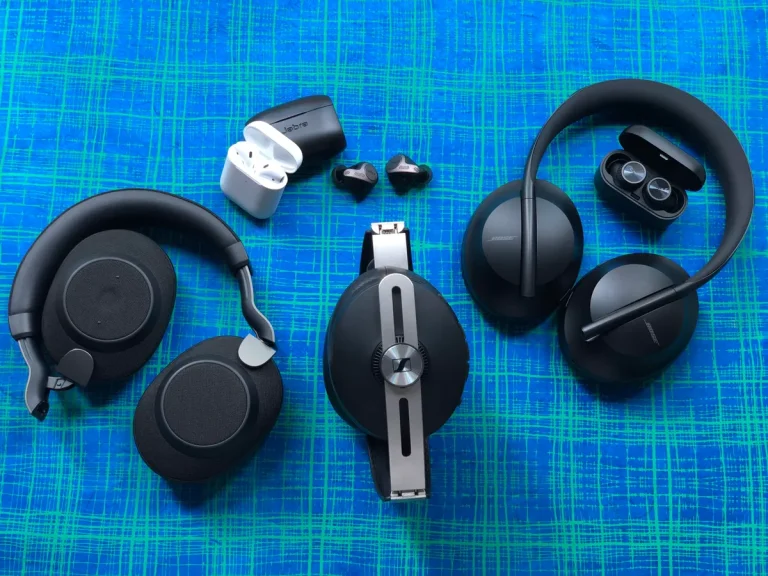If you use in-ear headphones for hours a day, the noise will likely affect your hearing. However, the damage is cumulative. It is important to take breaks from listening to loud noise to allow the hair cells in your inner ear to rest. For this reason, you should limit the volume of your Best in-ear headphones. Children should also have regular hearing tests every three years. If they exhibit any temporary symptoms, they should tell a doctor as soon as possible.
Table of Contents
Noise-cancelling in-ear headphones are bad for the ear
When used improperly, noise-cancelingin-ear headphones can cause damage to your ears. People who use these in-ear headphones for prolonged periods can develop infections. They can also cause dizziness and temporary hearing loss. So, it is important to check with your doctor before using noise-canceling in-ear headphones.
Most noise-canceling and even the absolute best in-ears work by blocking certain types of sound. The technology behind these devices involves an in-built microphone that measures the frequency of ambient noise and produces sound waves in the same frequency. These sound waves then travel to the noise-canceling mechanism. When the waves of opposite frequencies collide, the low-frequency ones cancel out the higher-frequency ones. This is known as destructive interference.
If you are working in a noisy environment, noise-cancelingin-ear headphones may be an excellent solution. They reduce the amount of background noise and allow you to listen to your favorite music at a lower volume. However, these in-ear headphones do not completely block high-frequency noises.
Sharing earbuds with others
There are several reasons why sharing earbuds with others is bad for your ears. First of all, the earbuds can be dirty. This means bacteria can stick to them. And this bacteria can be transferred when people share earbuds. That’s why it’s best to avoid sharing earbuds.
Second, earbuds can contain bacteria and yeast. These bacteria can cause infections. Yeast can grow in the soil and attach to earbuds, causing an infection. The bacteria can then transfer to a person’s skin. This infection is often painful and requires medical treatment. The symptoms of a yeast infection include itching and oozing drainage. Yeast infections can be difficult to treat and can be dangerous in the long run.
Sharing earbuds can also lead to the transfer of infectious diseases. While this risk is lower in people with immune systems, it remains possible. Sharing earbuds can increase the risk of swimmer r’s ears, middle ear infections, and skin infections in the lacerated ear canal. To avoid these infections, disinfect your earbuds thoroughly with rubbing alcohol or another disinfectant before giving them to another person. In addition, you should always clean your earbuds with a damp cotton ball.
Limiting volume on in-ear headphones
Many parents believe that limiting the volume ofin-ear headphones is good for children. However, it can also have detrimental effects on their ears. Most children are not sensitive to high volumes, and some volume-limiting in-ear headphones are so loud that they may harm their ears.
It’s important to know that loud volume does not affect your hearing immediately, but it does affect your ears over time. Different volume levels have different exposure times, and audiologists recommend limiting your child’s exposure to high volumes for a long time. Furthermore, it’s important to limit how long your child uses their in-ear headphones. While listening to music is fun, frequent exposure to loud volumes can damage the ear.
To check the volume of yourin-ear headphones, such as ones from the big test here:In ear headphone test, you can use a decibel meter. This device is usually inserted in the ear cup’s inner section, and the meter will display the decibel level on the LED screen. While you can use a decibel meter to test the sound of in-ear headphones, it is still important to monitor the volume of your in-ear headphones regularly. Excessive loudness can result in hearing loss, especially in crowded areas.
Cleaning in-ear headphones
There are some reasons why cleaning in-ear headphones is bad for your ears. First, you should avoid using liquids on the outside of the in-ear headphones. This can leave behind dust and stray fibers. It is also important to keep the inner parts of your headphones dry. Avoid using alcohol or cleaning agents that are harsh on leather or plastic. It is best to use a dry cloth on the ear cushions.
Moreover, alcohol is very harmful to plastic, rubber, or silicone parts. To clean your headphones, it is best to use mild soap. If alcohol does not work, you can use a cotton swab. Apply the solution using a cloth quickly. Don’t use too much of the solution, as this may cause bleaching or discoloration.
Conclusion
Dirt and grime buildup can affect the performance of your in-ear headphones. If you still wish to buy the best in-ears out there, you can still go ahead. Many people ask questions such as “Where to buy the best in ear headphones in Sweden”? The answer is in the link.The dirt clogs the drivers, reducing sound clarity and volume. In addition to ts, dirty in-ear headphone is a breeding ground for bacteria and microbes. The bacteria and viruses can transfer from headphones to other items that touch them. Viruses can live for up to three days on plastic and hard surfaces. It is therefore risky to use a pair of in-ear headphones that contain bacteria and other harmful microbes.

